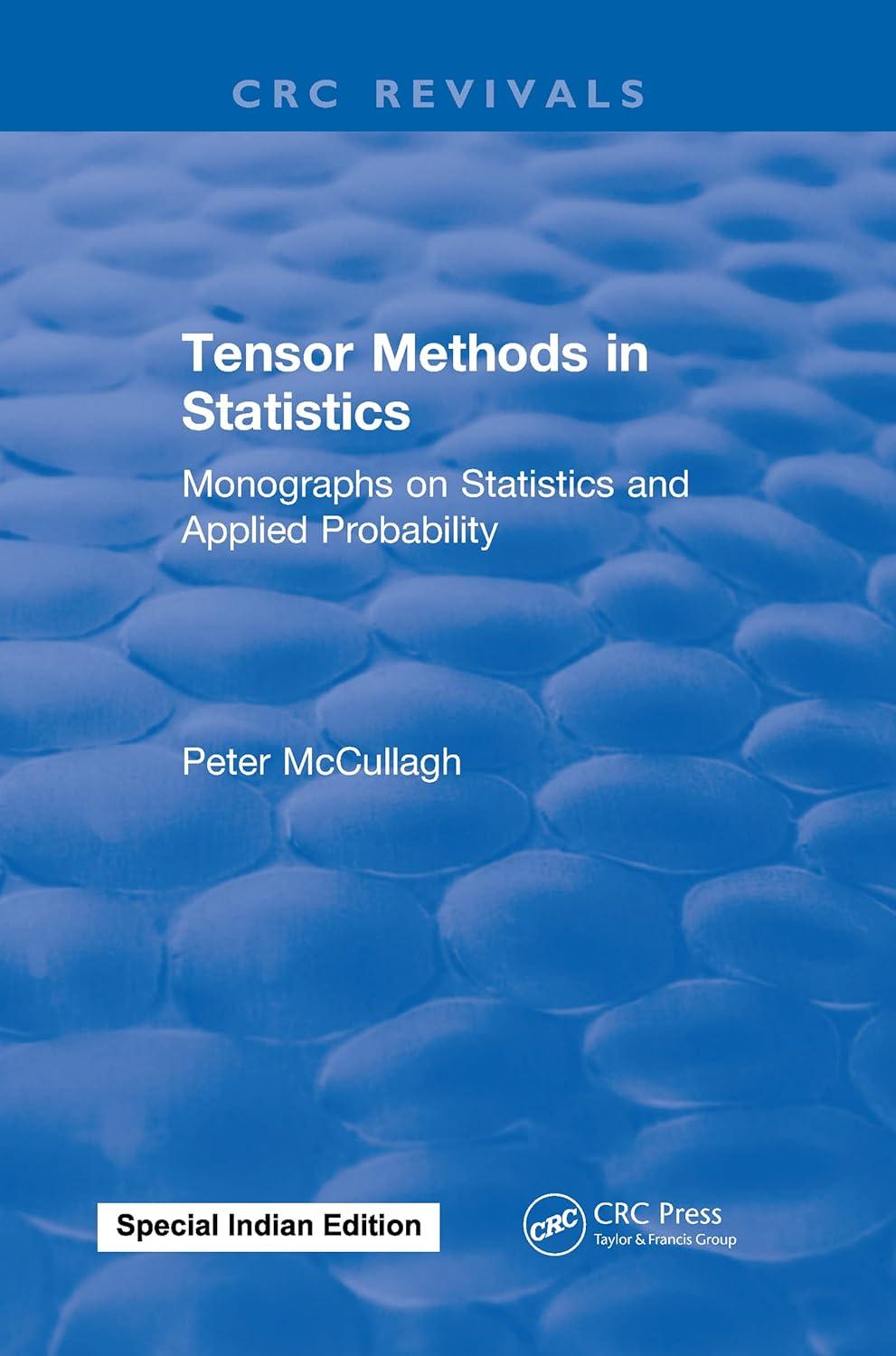Hookes Law: In the mechanics of deformable solids, the components of the stress tensor, pij , measure
Question:
Hooke’s Law: In the mechanics of deformable solids, the components of the stress tensor, pij
, measure force per unit area in the following sense.
Let ei be the unit vector in the ith coordinate direction and let ēi be the orthogonal plane. Then pii is the force per unit area normal to the plane, also called the normal stress, and pij
, j ≠ i are the shear stresses acting in the plane. The components of the strain tensor, qij
, which are dimensionless, measure percentage deformation or percentage change in length. Both arrays are symmetric tensors under the orthogonal group.
In the case of elastic deformation of an isotropic material, Hooke’s law in its most general form states that the relationship between stress and strain is linear. Thus, prs = b ij rsqij
, where b ij rs is an isotropic fourth-order tensor given by b
ij rs = λδ
ijδrs + 2μδ
i rδ
j s, for constants λ, μ that are characteristic of the material.
Show that the inverse relationship giving the strains in terms of the stresses may be written in the form qij = (λ
′δ
rsδij + 2μ
′δ
r i δ
s j)prs, where the new constants are given by
μ
′ =
1 4μ
, λ
′ + 2μ
′ =
λ+μ
μ(3λ+2μ) = E
−1
.
In the terminology used in Mechanics, E is known as Young’s modulus or modulus of elasticity, μ is called the rigidity or shear modulus and σ =
λ/{2(λ + μ)} is Poisson’s ratio. Note that E = 2(1 + σ)μ, implying that two independent constants entirely determine the three-dimensional elastic properties of the material. (Mumaghan, 1951, Chapters 3, 4; Jeffreys &
Jeffreys 1956, Section 3.10; Drucker, 1967, Chapter 12).
Step by Step Answer:

Tensor Methods In Statistics Monographs On Statistics And Applied Probability
ISBN: 9781315898018
1st Edition
Authors: Peter McCullagh





